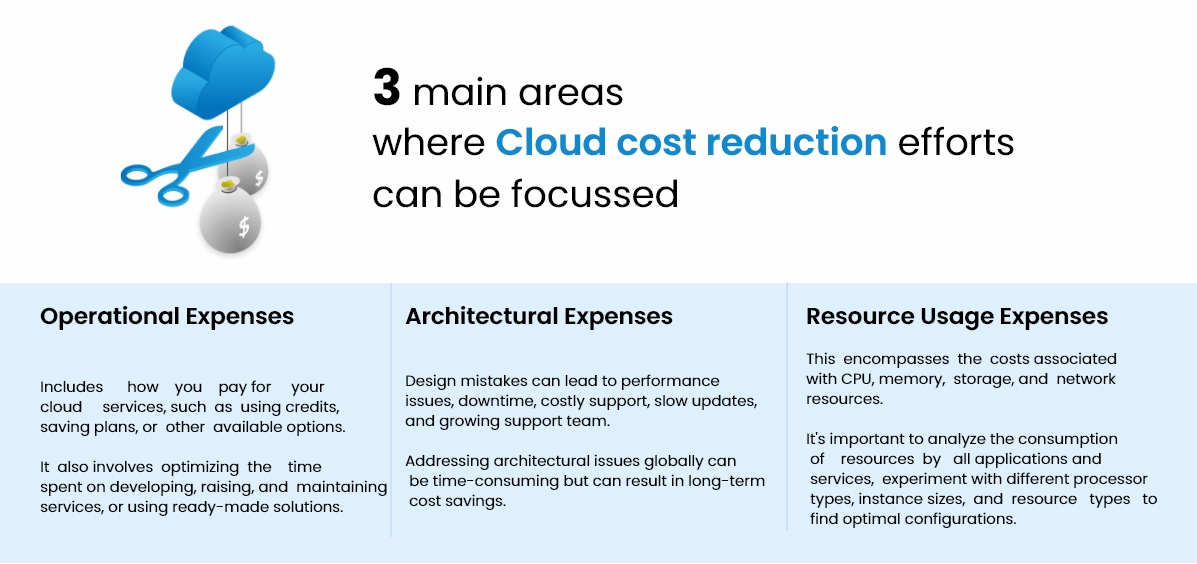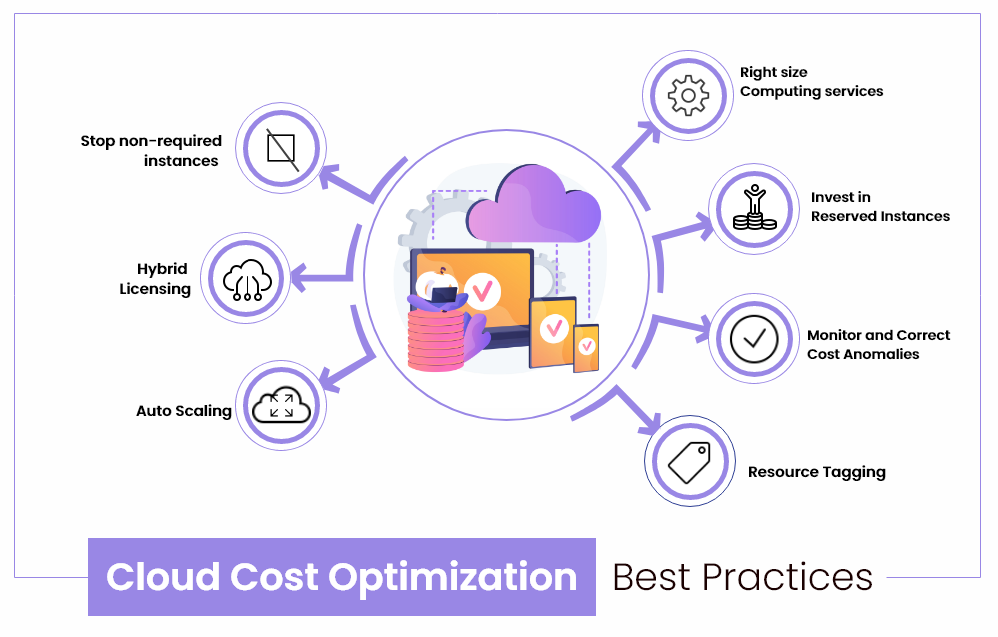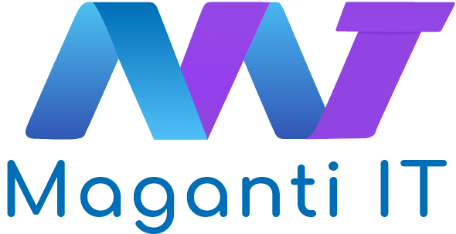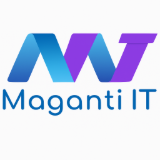
64% of respondents in a recent survey identified cost management and containment as the top concerns in running the cloud. This trend is expected to continue in 2024, with an estimated 80% of companies being unaware of their cloud adoption mistakes, resulting in overspending by 20 to 50%. If your cloud isn't optimized, chances are you're not utilizing your budget effectively.
There is a significant overlap between cost management and cost optimization best practices, especially when it comes to working with the cloud. At Maganti IT, we have extensive experience in cloud cost optimization and will be sharing nine crucial best practices to help you optimize your cloud costs.
Maganti IT optimized and streamlined a manufacturing IT project using cloud technologies and drove a significant reduction of cloud costs involved by about 50% using various optimization strategies. Through analysis of resource usage, management, and cost optimization, we identified three key areas where costs could be reduced: team size impact, unused services/resources, and suboptimal resource usage.
As you may know, the cost of cloud infrastructure is directly influenced by the size of the team with access to it. Accumulation of ten services and resources, as well as the use of suboptimal instances or resource types, can result in excessive costs. There are three main areas where cost reduction efforts can be focused:


There are numerous options to be choose from when it comes to public cloud providers, including AWS, Azure, GCP, IBM, Oracle, Alibaba, and others. Although these providers may offer similar services, it is vital to carefully assess and select the ones that best fit your organization's specific requirements, capabilities, and efficiency needs.
When evaluating different cloud options, it is important to consider factors such as compliance and cost. Additionally, the choice of region and configuration of cloud services can have a significant impact on overall cloud costs. Therefore, it is crucial to thoroughly consider all these factors to make an informed decision for your organization.

After selecting the appropriate cloud provider, establishing a well-defined hierarchy for organization, department, project, and subscriptions, along with a naming convention, is crucial for effective resource tracking and cloud governance. Resource tagging is a powerful tool that can optimize cloud costs by enabling better budget planning and accurate cost tracking, reporting, and analysis.
A strong resource tagging strategy helps organizations with resource optimization, budget forecasting, cost allocation, show back/chargeback, and building automation policies. By leveraging the metadata captured through tags and implementing a robust tagging strategy, organizations can gain valuable insights, make data-driven decisions, and implement effective cost optimization measures in their cloud environments.
When bringing new workloads onto the cloud, consider modernization and utilizing cloud-native offerings whenever feasible. Platform-as-a-service (PaaS) or software-as-a-service (SaaS) options are generally more cost-effective compared to infrastructure-as-a-service (IaaS).
Improperly configuring or using an inappropriate service can impact costs. For instance, building a multi-region service with high-availability or geo-redundancy when it's not required can result in increased costs without reasonable business justification. It's essential to carefully evaluate and select the appropriate cloud services and their configuration to optimize costs while meeting the business requirements effectively.
Resizing cloud instances to match their workload demands can immediately save as much as 20 per cent off the costs. E.g. Using Cost Advisor in AWS, you can determine the best instance type for your specific use case from over 1.7 million combinations. This process yields not just cost savings, but also improved performance and enhanced customer experiences.
Review your current resource utilization and performance requirements and modify resources to use the smallest instance or SKU that meets their performance needs. This approach ensures cost-effective resource allocation while maintaining optimal performance for workloads and applications.

Identify and terminate any resources in your cloud environment that are incurring costs but not adding value to your business. Stop non-required instances is an automated fashion by scheduling the start/stop of resources based on their usage patterns, resulting in potential cost savings of up to 70% for non-production environments.
If a resource has been unused for more than 90 days (about 3 months) and doesn't have a clear uptime requirement, it's recommended to turn it off or delete that resource. Make sure to validate data retention policies through backup or other mechanisms to ensure compliance.
To effectively monitor your costs and avoid exceeding your budget, create a budget and set up alerts to receive notifications when your spending is approaching or surpassing the budgeted amount. These regular alerts will help you stay informed and take timely actions.
For organizations with multiple departments and the need to track costs across different levels, it's important to define the right management group hierarchy. Organize your subscriptions within this hierarchy to efficiently track costs at various levels, ensuring cost visibility and accountability across your organization.
To optimize cloud costs, align resources with workload requirements, establish budgeting and write strategies, and implement network controls. Configure alerts and budgets for automatic notifications when costs approach thresholds. Use cloud management tools to analyze cost data based on service types, locations, resource groups, owners, and monthly usage. Identify high-consumption cost areas and devise strategies for cost-effective infrastructure optimization. Proactively manage cloud costs with data-driven decisions for optimal resource allocation and cost efficiency.
Maganti IT resources can assist you in identifying and implementing optimal strategies and policies for deploying cloud resources.
With our expertise, you can ensure cost-effective resource allocation and fine-tune your cloud environment by leveraging best practices. Let us help you optimize costs and keep them under control while maximizing the benefits of cloud computing


